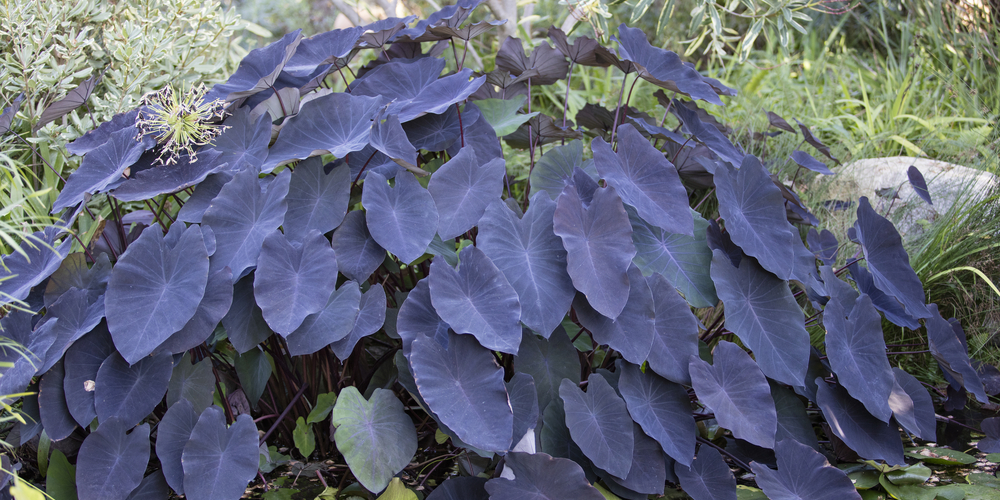Elephant ear is the common name for the plant that goes by the scientific designation Colocasia esculenta. This plant has stunning green shades. Some leaves bear a deep color, and others maintain a pale green. But do elephant ears come back every year?
Some elephant ear leaves have deep purple veins that line across the whole leaf and give the plant an elegant look. This plant is native to the tropical parts of Asia, portions of Australia, and the Pacific Islands.
Some varieties of this plant are edible in some of the more tropical locations. Although the leaves are edible, they can irritate the skin and should get cooked first to remove the irritants. This article will answer the question, ‘do elephant ears come back every year?’ We’ll look at the plants growing habits and discuss whether they are annuals or perennials.
Do Elephant Ears Come Back Every Year?
Elephant ears are a perennial plant that thrives year after year. You can expect this plant to come back every spring and summer, but it will die as winter comes around. Although this plant will become bare and die in the winter, there are steps you can take to care for your plant during the winter.
Elephant Ears Care
Elephant ears are low-maintenance plants that will require sunlight, water, and space. However, this simple plant may not need much time or investment from the plant owner. Elephant ears can make ideal additions to homes with busy plant owners who don’t have much time for gardening.
Sunlight
Elephant ears can survive in full sun but prefer to be in partial shade or indirect sunlight. Elephant ears are known to suffer from wilted, drooped, or burnt leaves when exposed to the sun for too long.
If you notice your elephant ear plant isn’t thriving in full sun, consider replanting it in a shady or partially shady spot.
Sprouting Time
Elephant ears may take several weeks to sprout and usually thrive in warmer weather. The soil may need to be in the mid-60s Fahrenheit before a sprout begins. In the hardiness zones where this plant thrives, this may be as early as April and as late as June.
Consider starting your sprouts indoors to protect them from cold temperature spikes. Starting sprouts a month before the last frost can help you get a headstart on your garden without worrying about your elephant ears dying before they get a chance to sprout.
Some elephant ears can be grown from seed pods the plant produces, but most are usually sprouted from store-bought bulbs that may need more maintenance to sprout.
Hardiness Zones
Elephant ears thrive the most in hardiness zones nine through 11. These zones are warmer climates. The cooler climates are zones three through eight, where elephant ears will likely not thrive. Elephant ears need warm temperatures to survive and thrive the best.
Watering
Elephant ears will need mild watering. Typically, if the topsoil of your elephant ear plant is dry, it will need more water. This plant may have adverse effects if it gets too much water, however. An elephant ear plant may get droopy and begin leaking water from its leaf tips if it gets too much water in its root system.
Consider setting up a watering schedule to ensure that your elephant ear plant gets the right amount of water.
How To Handle Elephant Ears in Winter
Many plant owners may decide to gently dig the remaining root system of their elephant ear plants out of the ground and store them in a cool location. Garages or basements are an ideal location to store these.
Other options include setting up a gentle cheesecloth or old sheet to insulate the root system. That will need to be repeated daily or weekly, depending on the severity of the weather.
Do Elephant Ears Come Back Every Year?: Final Thoughts
Elephant ears are attractive plants that don’t need much maintenance to keep alive and thriving. These plants will come back year after year since they are perennials. Although these plants will need plenty of care in the winter to ensure they survive the harsh conditions, they will likely have a good chance of survival come spring and summer.
Elephant ears may have originated from Asia and parts of Australia, but they do well in arid and semi-arid locations. Elephant ears do best in hardiness zones nine through 11. However, enthusiasts can grow this plant indoors in zones where they may not survive outdoor conditions.

